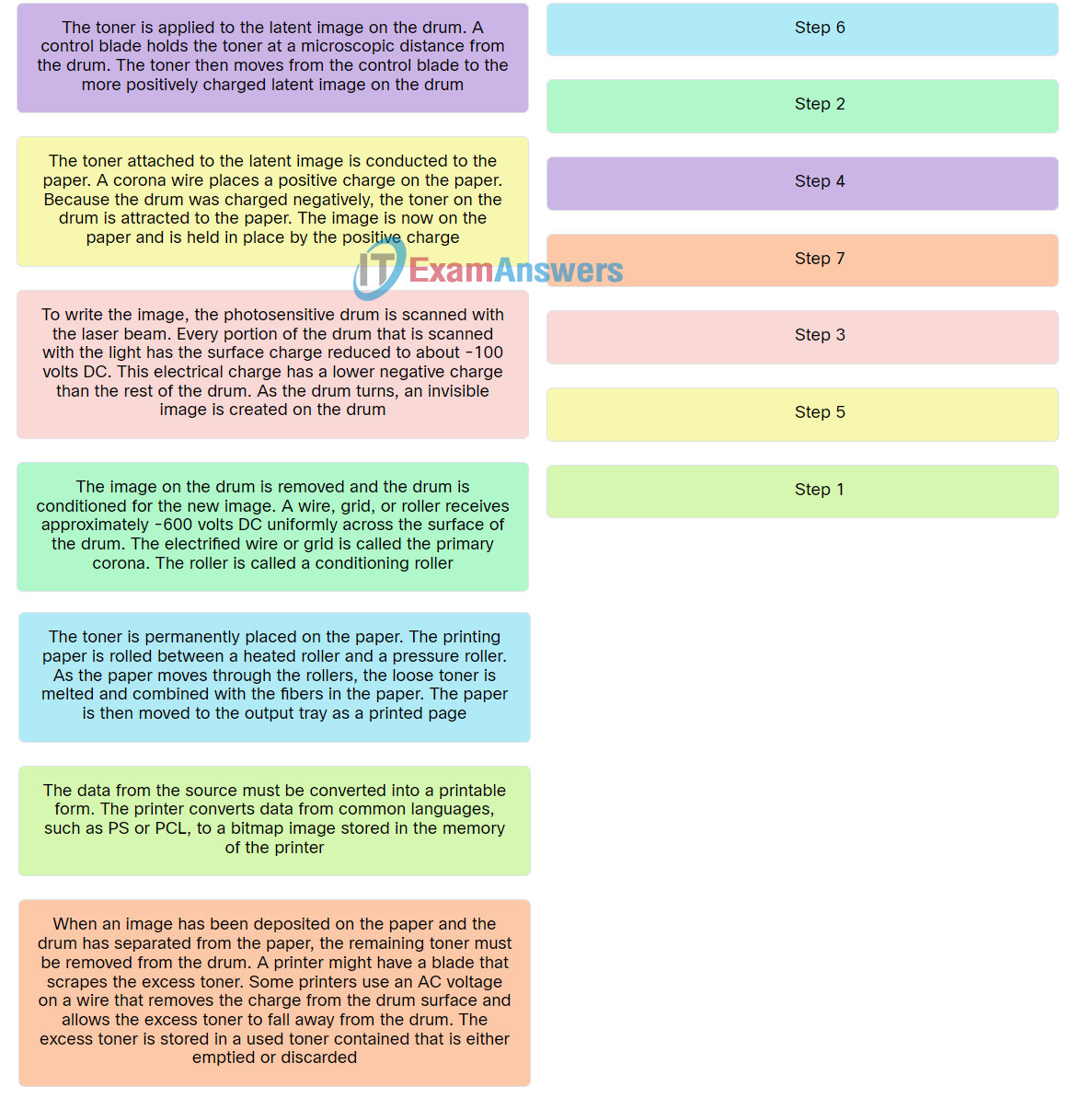Match the laser printing process to the correct explanation.

Explanation: Place the options in the following order:
| To write the image, the photosensitive drum is scanned with the laser beam. Every portion of the drum that is scanned with the light has the surface charge reduced to about -100 volts DC. This electrical charge has a lower negative charge than the rest of the drum. As the drum turns, an invisible image is created on the drum. | Step 3 |
| The toner is permanently placed on the paper. The printing paper is rolled between a heated roller and a pressure roller. As the paper moves through the rollers, the loose toner is melted and combined with the fibers in the paper. The paper is then moved to the output tray as a printed page. | Step 6 |
| The data from the source must be converted into a printable form. The printer converts data from common languages, such as PS or PCL, to a bitmap image stored in the memory of the printer. | Step 1 |
| The toner is applied to the latent image on the drum. A control blade holds the toner at a microscopic distance from the drum. The toner then moves from the control blade to the more positively charged latent image on the drum. | Step 4 |
| When an image has been deposited on the paper and the drum has separated from the paper, the remaining toner must be removed from the drum. A printer might have a blade that scrapes the excess toner. Some printers use an AC voltage on a wire that removes the charge from the drum surface and allows the excess toner to fall away from the drum. The excess toner is stored in a used toner contained that is either emptied or discarded. | Step 7 |
| The toner attached to the latent image is conducted to the paper. A corona wire places a positive charge on the paper. Because the drum was charged negatively, the toner on the drum is attracted to the paper. The image is now on the paper and is held in place by the positive charge. | Step 5 |
| The image on the drum is removed and the drum is conditioned for the new image. A wire, grid, or roller receives approximately -600 volts DC uniformly across the surface of the drum. The electrified wire or grid is called the primary corona. The roller is called a conditioning roller. | Step 2 |
Exam with this question: IT Essentials v8 Chapter 8 Check Your Understanding
Please login or Register to submit your answer
